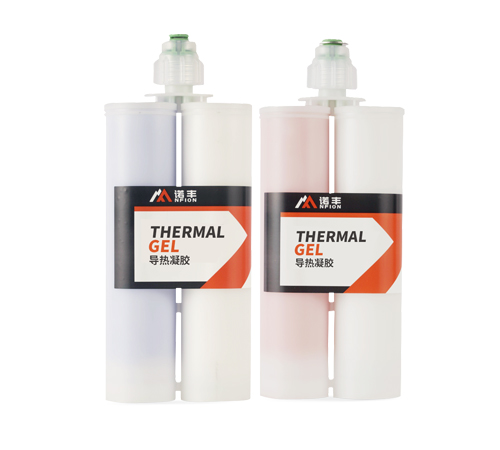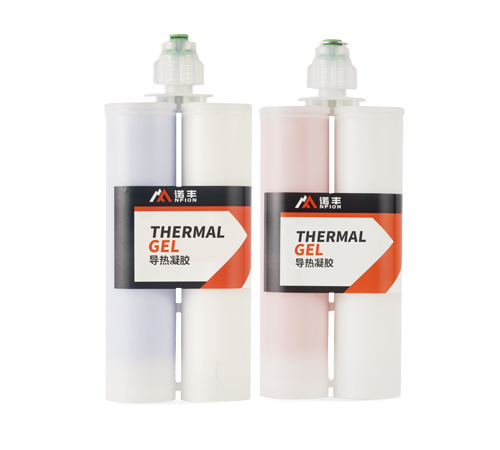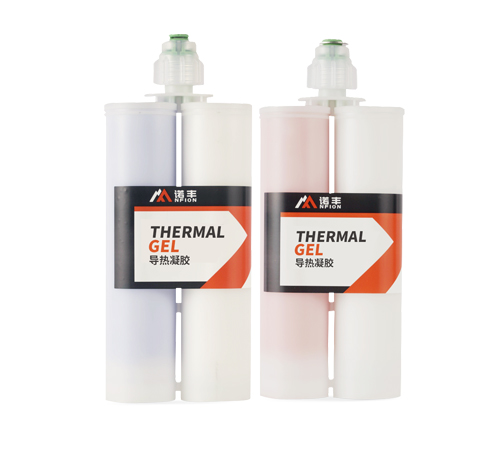In the application of thermal materials, two-component thermal gel (Liquid Thermal Pad) is widely used in heat management for industries such as electronics, telecommunications, automotive, and energy storage, due to its excellent thermal conductivity and ease of processing. The curing time of thermal gel is one of the key factors that affects its performance and application results. NFION will explore the effects of curing time on the performance of two-component thermal gel and analyze which curing time is more advantageous for different application scenarios.
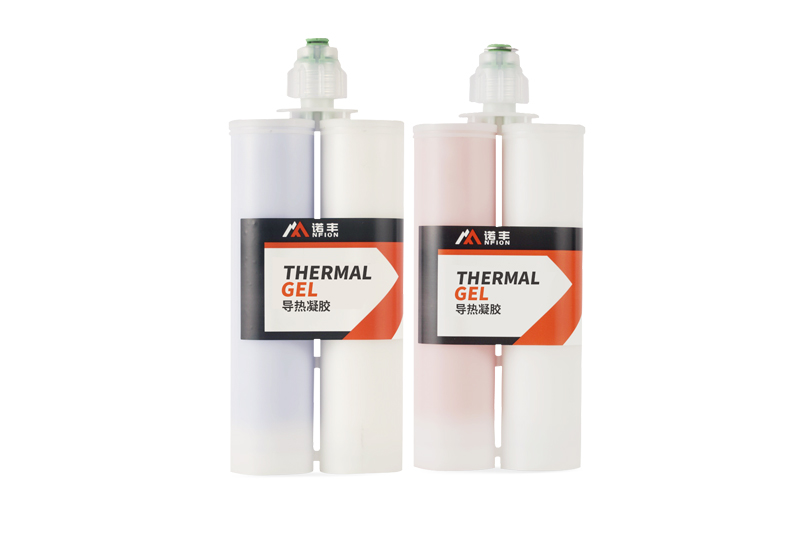
Basic Concept of Two-Component Thermal Gel
Two-component thermal gel is an advanced thermal management material, primarily composed of base polymers, thermal fillers, and additives. The unique feature of this material is that it forms a three-dimensional network structure during curing, providing excellent thermal conductivity and mechanical strength. The base polymers are usually organic silicon or polyurethane, which form an elastic network upon curing, giving the material flexibility and adhesion. Thermal fillers such as aluminum oxide, boron nitride, or carbon nanotubes significantly improve heat conduction efficiency. Additives like thixotropic agents and dispersants are used to optimize processing performance and stability.
This carefully designed combination allows two-component thermal gel to perform exceptionally well in various complex environments, making it an indispensable part of modern industry.
Curing Time Definition and Influencing Factors
Definition
The curing time of two-component thermal gel refers to the time required from the moment the two components are mixed until the gel reaches a certain strength and stability.
Influencing Factors
● Temperature: Generally, the higher the temperature, the faster the curing speed.
● Mixing Ratio: Strict adherence to the prescribed mixing ratio significantly influences curing time.
● Catalyst Content: Appropriate catalysts can accelerate the curing process.
Advantages of Longer Curing Time
1. Better Adaptability and Processing Space
Longer curing time offers more time to adjust and optimize the gel’s application, particularly when coating large or complex surfaces. This prevents issues such as bubbles or misalignment caused by overly rapid curing. It is particularly beneficial in high-precision, high-demand heat dissipation systems, ensuring even distribution of the thermal gel and maximizing its heat conduction performance.
2. Stronger Filling Ability
A longer curing time allows the gel to better fill small gaps between heat sinks and heat sources, ensuring full contact at the interface. The thermal resistance of the material is closely related to the gap ratio between the contact surfaces. Longer curing time allows the gel to flow and adapt to irregular surface shapes, improving thermal conductivity.
3. Improved Durability and Stability
Longer curing time enables more thorough chemical reactions, ensuring the stability of the gel’s molecular structure, thus enhancing its long-term performance. Especially in high-temperature and high-power operating environments, the gel’s heat resistance and thermal stability are crucial. Long-term reliability and stable thermal performance are key advantages of two-component thermal gel in electronic heat dissipation systems.
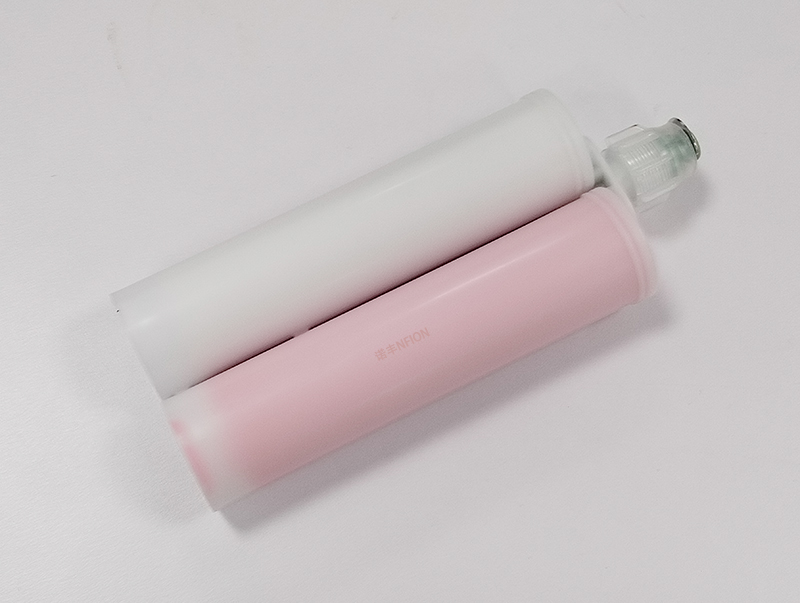
Advantages of Shorter Curing Time
1. Faster Application and Increased Production Efficiency
Thermal gel with a shorter curing time significantly increases production efficiency. In large-scale production, it allows for faster assembly and factory testing of devices. For highly automated production lines, a shorter curing time results in shorter cycles and higher production capacity, reducing production costs and enhancing market competitiveness.
2. Better Suitability for Compact Space Design
Modern electronic devices tend to be smaller, lighter, and more integrated. The heat dissipation structures of these devices are usually compact. In such environments, thermal gels with shorter curing times can solidify quickly and perform effectively in limited spaces. For products that require rapid testing and market launch, thermal gel with a short curing time is more suitable for meeting the needs of fast development and production.
3. Reduced Negative Impact from Over-Curing
In certain applications, excessively long curing times can cause over-reaction of the gel, leading to unnecessary stress or making the material too rigid, which affects its elasticity and heat conduction performance. Short curing times effectively reduce the risk of over-curing, ensuring the material's performance is controllable.
Impact of Curing Time on Performance
The length of curing time directly impacts the final performance of thermal gel, including thermal conductivity, mechanical strength, and stability. Longer curing time typically helps optimize the material structure and ensures long-term stability in high-temperature environments, while shorter curing time is beneficial for improving production efficiency and meeting the demands of compact designs.
1. Thermal Conductivity: During curing, the molecular structure of the thermal gel gradually stabilizes. Longer curing time helps form a more uniform network structure, enhancing thermal conductivity. In contrast, shorter curing times may result in an incomplete network structure, reducing heat conduction efficiency.
2. Mechanical Performance: Both excessive and insufficient curing times can affect the gel's mechanical properties. An overly long curing time may cause the gel to harden, losing flexibility, whereas a short curing time may result in insufficient strength, affecting stability and durability.
3. Adaptability: Thermal gel with a longer curing time is more suitable for complex applications and larger contact surfaces, allowing more time to adjust shapes and distributions. Short curing time is more suitable for high-efficiency, large-scale production and compact design needs.
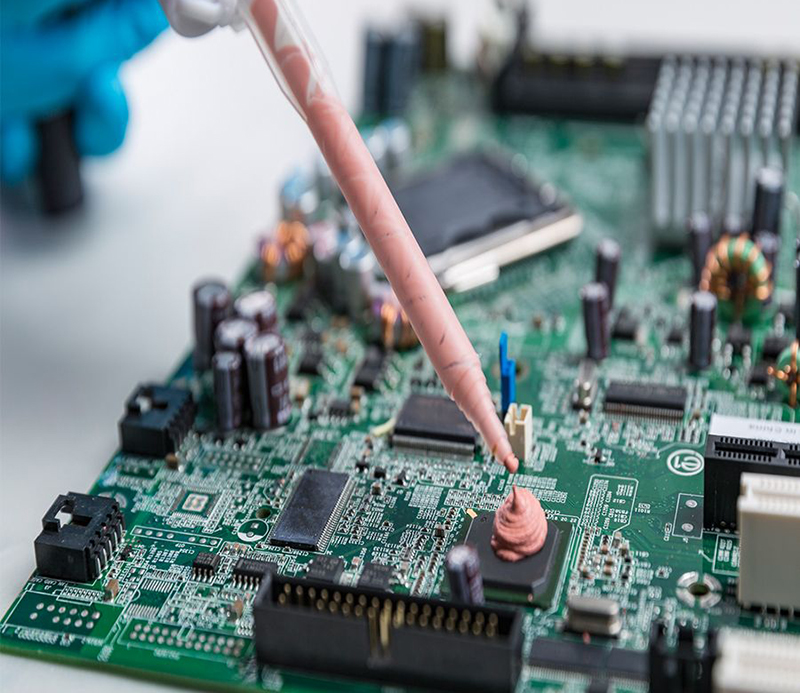
Comprehensive Considerations
Application Scenarios
For large-scale, relatively stable production environments with high assembly quality requirements but less emphasis on speed, longer curing times may be the better choice. For example, in the assembly of industrial and commercial energy storage liquid cooling packs, larger equipment with complex assembly processes benefits from longer curing times. In contrast, for smaller consumer electronics such as smartphones, tablets, or fast-charging devices, where production speed is critical, short curing time thermal gels are more advantageous to meet the fast production and large-volume shipping demands.
Material Cost and Performance Balance
Sometimes, thermal gels with longer curing times may be less expensive as they may not require special additives or processes to accelerate curing. However, this needs to be balanced against production efficiency and product performance. If a longer curing time significantly reduces production efficiency, it may be worth considering a shorter curing time gel, despite the higher cost. On the other hand, although short curing time gels improve production efficiency, their performance could be affected by rapid curing, such as lower thermal conductivity or poorer adhesion to contact surfaces.
Device Compatibility
When choosing thermal gel, it’s also essential to consider compatibility with other materials in the device. For example, certain metals in the device may affect the curing speed of the thermal gel, and the overall material composition of the device may dictate the appropriate curing time. Additionally, the design of the heat dissipation structure in the device may affect the choice of curing time for the thermal gel. For example, compact heat dissipation structures may require a gel with a shorter curing time to prevent excessive stress during curing.
Conclusion
Both long and short curing times for two-component thermal gel have their respective advantages. The choice of curing time should be based on the specific application needs and environmental conditions. Longer curing times help improve thermal conductivity, filling ability, and material stability, making them suitable for high-precision applications. In contrast, shorter curing times are beneficial for improving production efficiency and meeting compact design needs. A rational choice based on specific requirements will ensure that two-component thermal gel performs optimally in electronic device heat dissipation systems, ensuring product performance, quality, and production efficiency.


 CN >
CN >

